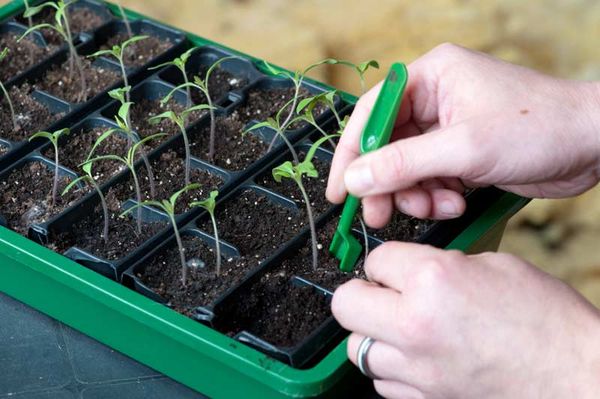The pickling of tomato seedlings is an important step in the development of the plant. It is necessary for the development of a strong root system, accelerating the growth and ripening of fruits.
Table of contents
Tomato picking process
Some gardeners believe that picking does not create stress for transplanted seedlings. Others, on the contrary, talk about the need for picking to improve root growth and speed up fruiting.
In order for the seedlings to germinate, a lot of land will not be needed, so small germination containers are used. Be sure to do at the bottom of the tank holes to remove excess moisture and oxygen access to the roots.
Gradually the seedlings become larger, the roots develop and occupy more space. In this case, the roots need more nutrients and a larger container size for normal plant development. Otherwise, it will begin to languish.
At this point, and spend picking seedlings in more spacious containers with openings at the bottom. The root system will continue to grow, become powerful, which affects the health of the whole plant.
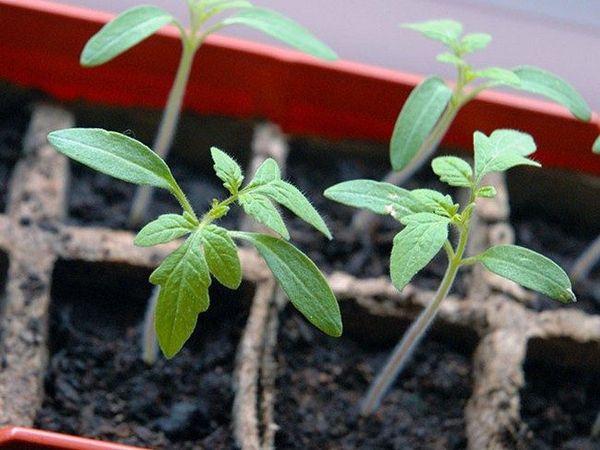
Dive concept
If the seedlings were planted immediately separately from each other, then they dive in more spacious tara.
How to dive tomato seedlings
In order to avoid damage to the roots, it is necessary to dive seedlings carefully. Transplant spend with a lump of earth. This method is also called transshipment, with its roots remain intact.
Saplings removed from the previous growth place and with a clod of earth are planted one by one in separate containers.
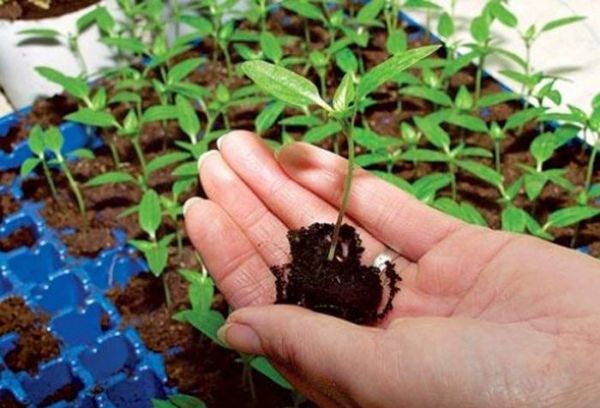
Time and procedure
The best time to transplant tomato seedlings comes when the plants appear first two true sheets. Approximate correct time for holding - for 7-10 day.
The first pair of leaves that appeared are not real leaves, they are the so-called cotyledon leaves. After these two leaves begin to grow real.
The process has a number of features that should be adhered to in order not to harm fragile young saplings.
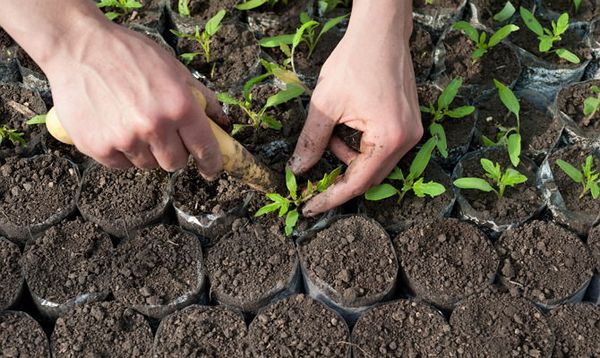
Step-by-step process
When the first pair of leaves appears, the seedlings swoop.
The process consists of the following steps:
- Seedling preparation. Seedlings should be watered abundantly several hours before transplanting. This will soften the soil and minimize damage to the root system.
- Preparation of soil and packaging. The best option - plastic cups of 0.5 liters. Pour earth into cups, make 5 cm hollows. Water is poured into the hole.
- Transplant to new tank. Carefully remove the seedlings and immerse them in the recess in the new cup. Should be lowered to the cotyledon leaves. The land near the plant is compacted.
After transplanting plants need to acclimatize at a new place. Cups put on the day in a shaded place, sunlight is not desirable after picking.
Water about 1-2 times a week. Once the seedlings are strong, it must be exposed to sunlight.
Traditional way
Way when the seeds sown in total capacity and dive further into separate containers, called traditional.
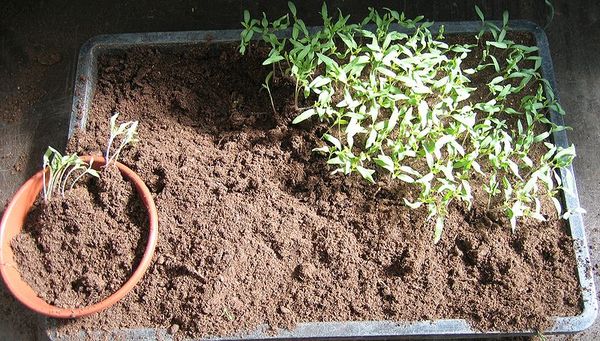
In this method, the saplings are separated one by one from the rest, growing in one container, and transplanted into prepared cups. There is another way in which seeds are sown immediately in separate containers.
Transplanting sprouts germinating in separate containers
Pickup when grown in separate containers begin at the same time as with the traditional method.When the first true leaves appear.
At the bottom of the new tank, they make holes, cover the ground and make holes. Pre-watered seedlings are removed from the old containers with a clod of earth and placed in the hole. This method is more laborious, but also effective, because plants quickly get used to a new place.
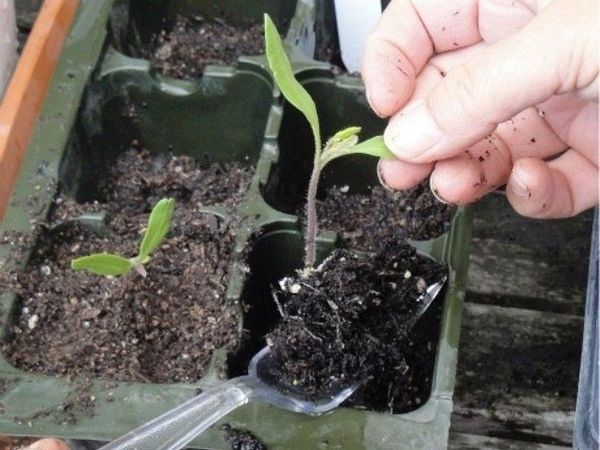
Features transplanting sprouted seedlings
Sometimes seedlings can be pulled out, there can be many reasons: lack of sunlight, excessive watering, high temperature. Do not despair, it will help to fix it by picking seedlings.
The pickling of the sprouted seedlings is the same as usual. With stretched thin seedlings need to be very careful. One awkward movement, and the sprout can break.
Stretched buried in the ground to cotyledon leaves. It is necessary to carefully lower the hole in the hole and fill it with earth, taking care not to damage the thin trunk of the seedling.
A further plan of action is the same as with a normal pick: put a container with saplings into shading, water as needed, after the seedlings have taken root, clean in a sunny place.
Avoid direct sunlight on seedlings, they can get burned.
After care
After picking, the plants need to feed. As a top dressing use urea, superphosphate. Top dressing is introduced 10-14 days after the picking and again 2-3 weeks later.
Be sure to water the plant after making feeding, otherwise the roots can get burned. After watering, the soil is loosened, which contributes to the saturation of the root system with oxygen, stimulates active and healthy growth of the plant.
Water seedlings about 2 times per week, but be sure to inspect the soil. If it is wet, you should stop watering, otherwise you can pour the tomatoes. The roots will start to rot, and the growth process will stop, the plant will look sluggish, the leaves will turn yellow.
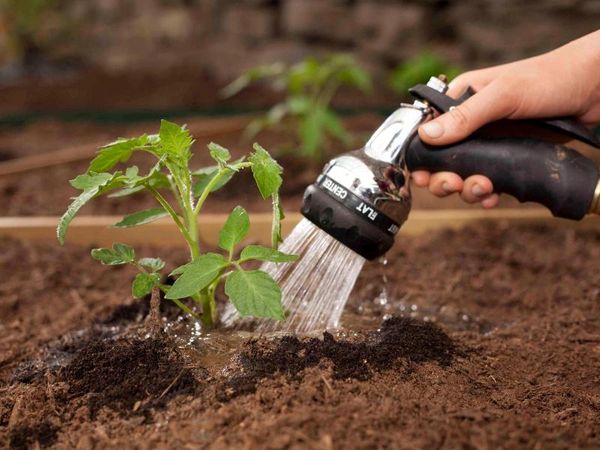
Danger
A pick is an important process; if it is carried out incorrectly or out of time, a number of problems can be encountered.
For example, if a seedling root is badly damaged during a transplant, this provokes a developmental stop for a whole week, respectively, and the crop will ripen later.
If the pick starts too early, weak, weak shoots can be damaged during transplantation.Too late picking also slows down the process of acclimatization of the seedling.
Usually the procedure for diving seedlings occurs in April, although the time depends on the timing of sowing seeds and the climatic zone.
Thus, the picking is an important stage in the development tomato seedlings. If mistakes are made during transplantation, it is possible to provoke a slowdown in the development of saplings or, if carelessly handling, damage the roots or the stem that has not yet become stronger, leading to the death of the plant.
Following the above steps, you can avoid mistakes, the seedlings will grow strong, and the root system is powerful.
